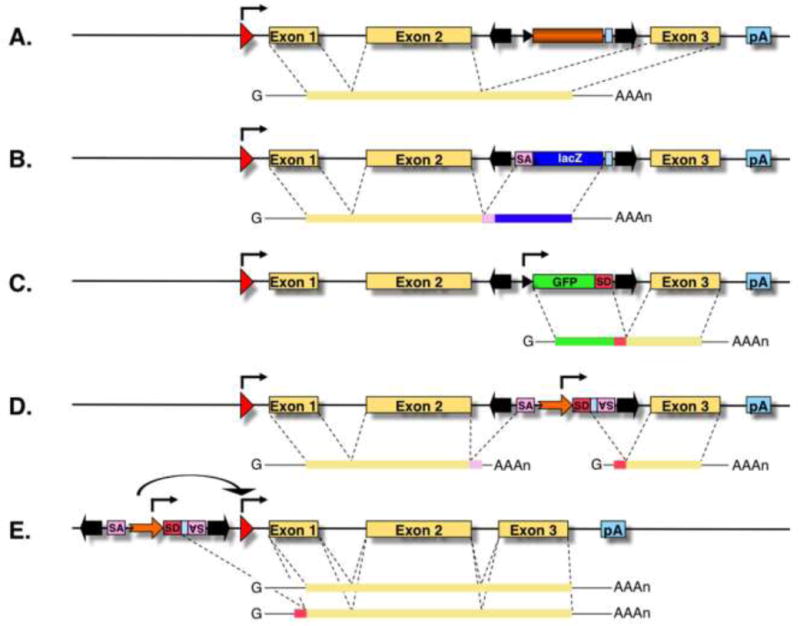Figure 3. Mutagenic cassettes.

(A) A hypothetical transcription unit is depicted with an upstream promoter (red arrow), three exons (yellow boxes) and a polyadenylation signal (pA). An intronic transposon insertion is typically not mutagenic, because the transposon is spliced out from the primary RNA transcript together with the targeted intron sequences, thereby resulting in normal gene expression. (B) Gene trapping cassettes contain a splice acceptor (SA) followed by a reporter gene and a pA. The SA truncates the transcript, and expression of the reporter follows the expression pattern of the trapped gene. (C) Poly(A) traps contain a promoter followed by a reporter gene and a splice donor (SD) site, but they lack a pA signal. Therefore, reporter gene expression depends on splicing to downstream exon/s of a Pol II transcription unit containing a pA. (D) The oncogene trap contains SA signals in both orientations and a bidirectional pA signal to disrupt transcription, as well as a strong, viral enhancer/promoter (thick orange arrow) that drives transcription towards the outside of an inserted transposon, and thereby overexpresses a gene product. In case this transposon lands in the 5′ transcriptional regulatory region of a gene (E), a full-length transcript might be overexpressed.
